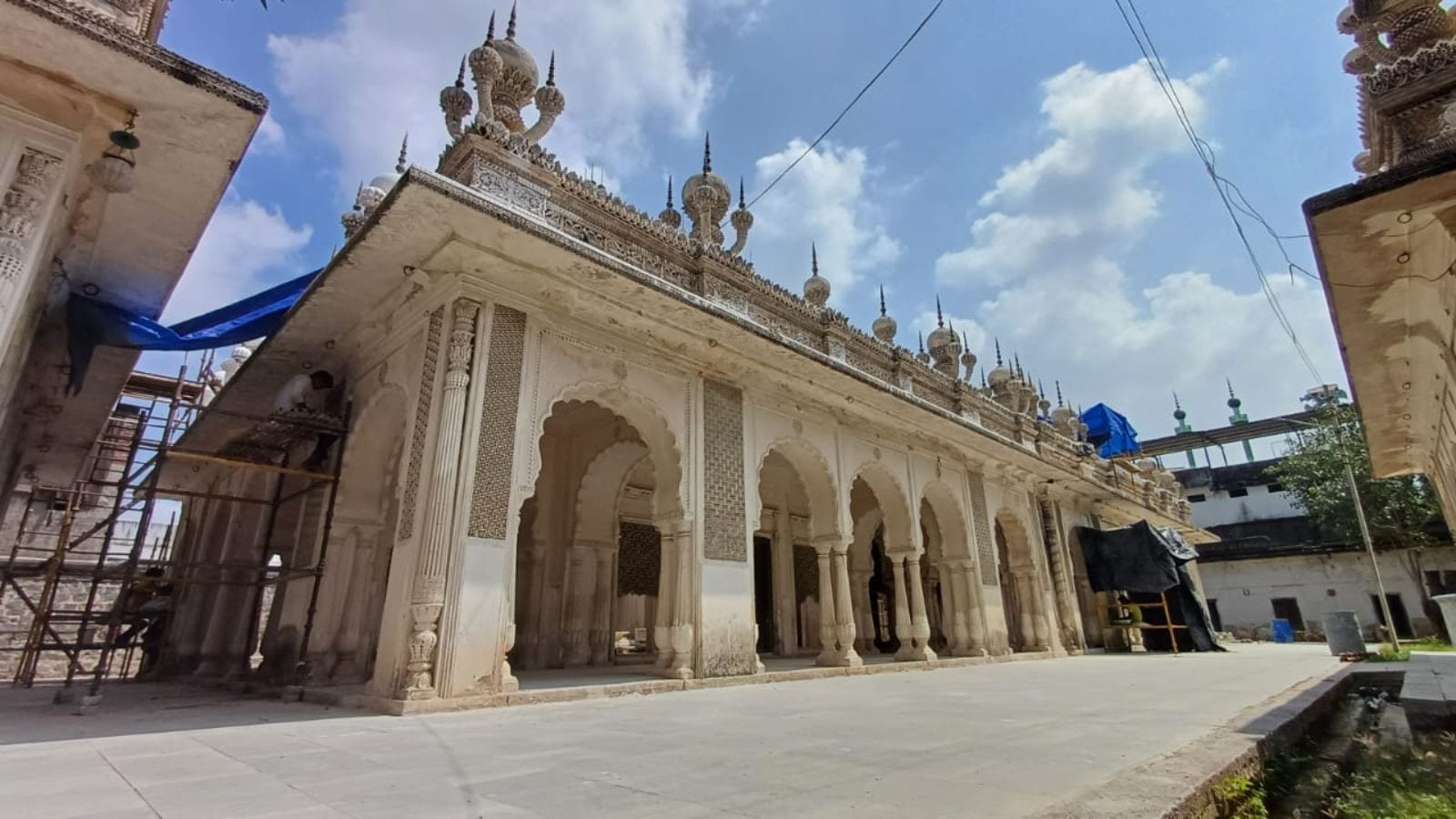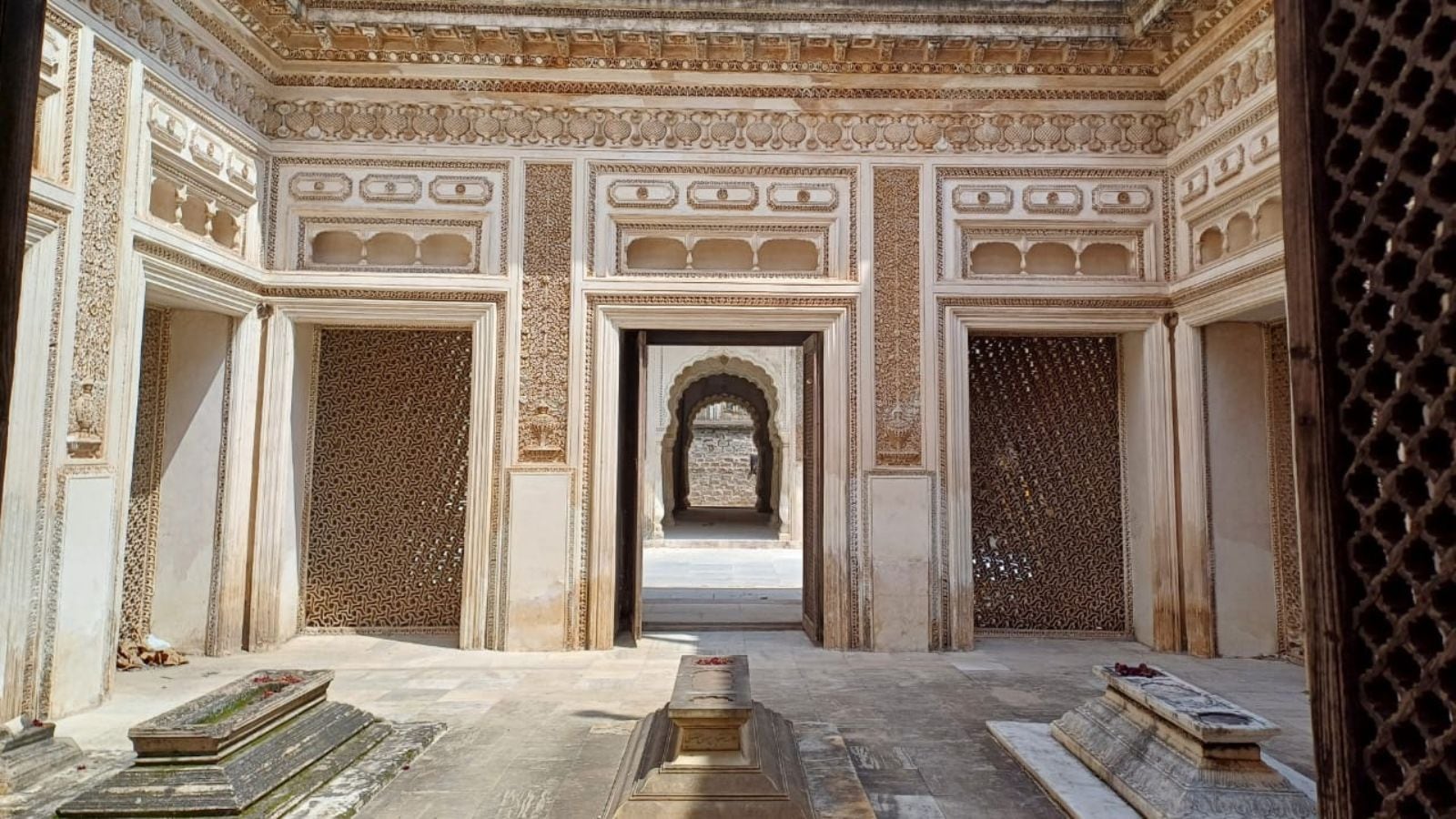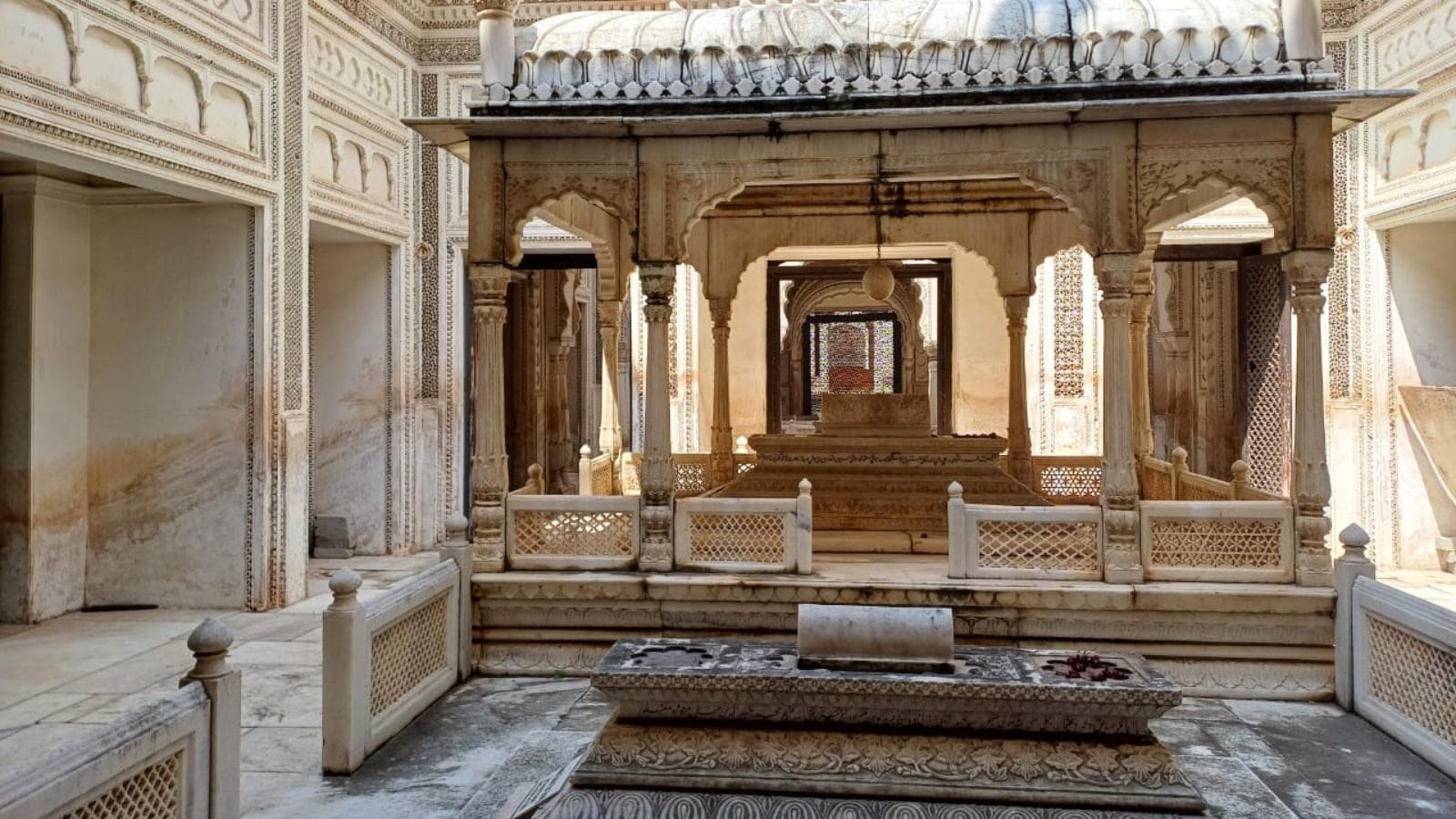Hidden in the heart of Hyderabad’s old city, tucked among the narrow lanes of Santoshnagar, lies a forgotten architectural marvel: Maqhbara Shams al-Umra, also known as the Paigah tombs. This 200-year-old necropolis, located just three kilometres south of Charminar, has long been neglected. However, there’s hope on the horizon as restoration efforts are now underway, offering a chance to revive this historical site.
The ongoing project to revive the necropolis of one of the most powerful noble families of Hyderabad has been taken up by the Department of Heritage Telangana and the Aga Khan Trust for Culture (AKTC). The conservation of six of the 14 monuments is supported by the US Ambassadors Fund for Cultural Preservation.
The architecture
The magnificent stone and lime mortar structures are a reflection of the aesthetic tastes of the Paigah family, who displayed their wealth and grandeur even in death. The tombs have a variety of trellises (patch or screens), ornamented pillars, roundels on the facades, carved wooden doors and panels, and pineapple motifs, a symbol of hospitality, notes Dr J Kedareswari in his book The Paigah Tombs. “With the stucco work and geometrical patterns, they create a harmony that is consistent with the Islamic belief that all creation is harmoniously interrelated. Islamic art depicted in the Paigah tombs explores geometric systems that depend upon the regular division of the circle,” she says.
A board outside the tombs reads: the complex is a unique ensemble with no comparative site anywhere in the world, boasting of the incredible craftsmanship employed by the Hyderabadi craftsmen.
 The Paigah Tombs in Hyderabad, India are being restored by the Aga Khan Trust for Culture and Department of Heritage Telangana. (Rahul V Pisharody/Indian Express)
The Paigah Tombs in Hyderabad, India are being restored by the Aga Khan Trust for Culture and Department of Heritage Telangana. (Rahul V Pisharody/Indian Express)
Prof. Salma Ahmed Farooqui, Director, H K Sherwani Centre for Deccan Studies at the Maulana Azad National Urdu University (MANUU) says that in history, whether it is a noble or a king, they always wanted to leave their imprints behind. “The best imprints you leave behind for posterity is through architecture. Architecture is something they indulged in, the more the grandeur meant that everyone remembered them for a long long time till the structure perishes,” she says, adding that today the Paigah tombs could be the only thing visible but their significance needs to be seen in totality. “We should not see Paigahs only in relation to the tombs. They played a much larger role of importance in Nizam’s Hyderabad, which needs to be reconstructed. They were a very important component of nobility.”
Who were the Paigahs?
The Paigahs were a noble family of Hyderabad, only second to the Nizams. Their wealth, power and influence continued from the inception of the Asaf Jahi rule of the Nizams in 1724 till the princely state’s accession into the Indian Union in 1948. “They were known for their loyalty to the Nizams and were related to the ruling family through matrimony,” says Sibghat Ullah Khan, architectural designer and co-founder of the Deccan Archive, a non-profit entity documenting the heritage of Hyderabad.
One of their most famous palaces is now the iconic Taj Falaknuma Palace. Originally built on a hilltop by Nawab Sir Viqar-ul-Umra who was the prime minister of Hyderabad state, the palace was eventually gifted to the sixth Nizam, Nawab Mir Mahboob Ali Khan, after he expressed admiration for its grandeur.
Story continues below this ad
Prof Farooqui says that the Paigahs were given extensive tracts of land, sometimes bigger than that available with Jagirdars, where they maintained their private army that would assist the Nizams in times of any incursions or adversities. “In these estates, which comprised thousands of villages, the Paigahs got the revenue and judicial powers and started participating in education, health, public works, revenue settlements etc. But their primary responsibility was undoubtedly to maintain private forces for the Nizam,” she adds.
 The tombs have a variety of jaalis or screens, ornamented pillars and roundels on the facades. (Photo: Rahul V Pisharody/Indian Express)
The tombs have a variety of jaalis or screens, ornamented pillars and roundels on the facades. (Photo: Rahul V Pisharody/Indian Express)
Pineapple motifs and ostrich eggs
At the tomb complex in Phisalbanda, the first tomb on the left is that of Abul Fateh Khan or Nawab Taig Jung Bahadur. He was the family patriarch who was first bestowed the honorary title of ‘Paigah’ by the first Nizam. The word ‘Paigah’ means a ‘footstool’ because they were the military commanders of the Nizam and staunch loyalists of the house of Asaf Jahs.
A striking feature of the tombs is the ostrich egg that hangs above the grave of Fakruddin Khan, Abul Fateh Khan’s son and the first to marry into the Nizam’s family, which cemented their relationship further. The Nizam was dependent on the Paigahs and the latter had repeatedly demonstrated their loyalty. “In Hyderabad, it was common for the Nawabs to hold Ostrich races at their palaces. An Ostrich egg was considered exotic. This is the reason why it was hung above the grave of Fakruddin Khan and it is the last surviving one,” says Sibghat.
A pineapple is another important motif that is extensively used at the tombs complex. It was introduced to the Deccan by the Portuguese and thereafter symbolised royalty.
Story continues below this ad
“These are not great buildings but just pure works of art. Restoring Paigah tombs is like restoring a painting,” says Ratish Nanda, conservation architect and CEO of the AKTC. According to him, the ongoing project is similar to an art conservation project with time-taking and painstaking work of craftsmanship.
 A striking feature of the tombs is the ostrich egg that hangs above the grave of Fakruddin Khan. (Photo: Rahul V Pisharody/Indian Express)
A striking feature of the tombs is the ostrich egg that hangs above the grave of Fakruddin Khan. (Photo: Rahul V Pisharody/Indian Express)
Nanda notes that the tombs are adorned with intricate stucco work and even the jaalis are made of lime mortar, which is unique to these monuments. The complex has open-to-sky enclosures that boast incredible carving work on lime mortar, wood and marble surfaces. It was only during the restoration that many new facts emerged. “For instance, we now know that all the minarets are made of terracotta. They have an iron core, covered in terracotta to give the shape and then plastered in lime mortar and had copper finials on top. Four or five materials are used in minarets alone,” Nanda says, adding that it took them a lot of time to figure out how the jaali was made. “These are made of terracotta tiles. It is almost like creating a house of cards by stacking terracotta tiles on top of each other. And then they are covered in lime plaster. Such jaalis are not seen anywhere in the country.”
The Paigahs adopted various styles of architecture to include them in their buildings and structures. “It is because the Paigah patriarchs would travel across the world and adopt elements that inspire them. Besides Mughalai and Rajputana influence, later tombs had Moroccan and Spanish elements. Because of the wealth they had, they could employ the best of craftsmen for the job,” says Sibghat.
One of the finest examples of their international exposure could be seen in the Spanish mosque in Begumpet, which was also an estate of Paigahs. The building campus that housed the US consulate general in Hyderabad for over a decade, before they moved to their new campus in the IT corridor, is another example of a Paigah palace. Asman Garh Palace in Malakpet is one of the few remaining Paigah palaces that still stand in Hyderabad.







